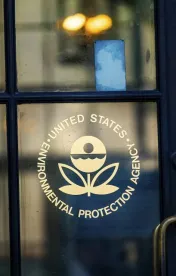The U.S. Environmental Protection Agency (EPA) recently proposed a Toxic Substances Control Act (TSCA) Significant New Use Rule (SNUR) to block companies from manufacturing, importing, or processing over 300 per- and polyfluoroalkyl substances (PFAS) listed on the TSCA Inventory but assumed not to be moving within U.S. commerce because the substances are designated on the Inventory as “inactive.” Per- and Poly-Fluoroalkyl Chemical Substances Designated as Inactive on the TSCA Inventory; Significant New Use Rule, 88 Fed. Reg. 4937 (proposed Jan. 26, 2023). Before manufacturing, importing, or processing any of these substances, a company would first be required to prepare and submit a Significant New Use Notice (SNUN) and then await EPA’s review and risk determination. At that time, EPA may elect to impose any of a wide range of risk management measures, if the Agency allows the substance to return to commerce at all. EPA is accepting comments on the proposal until March 27, 2023 (60 days).
Scope of Proposed Rule
EPA defines the category of PFAS that would be covered by the rule as those that are (1) listed on the TSCA Inventory, (2) designated as “Inactive” as of the rule proposal date, (3) not already subject to another individual or categorical PFAS SNUR (e.g., 40 C.F.R. §§ 721.9582 (Certain perfluoroalkyl sulfonates) and 721.10536 (Long-chain perfluoroalkyl carboxylate chemical substances)), and (4) containing one or more of the following structures:
-
R-(CF2)-CF(R′)R″, where both the CF2 and CF moieties are saturated carbons;
-
R-CF2OCF2-R′, where R and R′ can either be F, O, or saturated carbons; or
-
CF3C(CF3)R′R″, where R′ and R″ can either be F or saturated carbons.
This proposed definition excludes “lightly fluorinated” substances (containing only unconnected CF2 or CF3 moieties), those having only a single fluorinated carbon, and unsaturated fluorinated moieties. These forms are expected by EPA to be less persistent in the environment. EPA has identified the 330 chemicals that it believes meet these criteria. All are listed in the docket (HQ-OPPT-2022-0867), except for 30 for which both the specific identity and “fluor” in a generic name have been claimed as CBI.
Exemptions
Even if a PFAS meets the definitional criteria noted above, a company’s specific use may still be exempt from the proposed SNUR if it meets any of the standard SNUR exemptions. These include exemptions for substances manufactured for R&D, as impurities, or as a byproduct that is burned as fuel or disposed of as waste, or solely for export. And unlike EPA’s other categorical PFAS SNUR (40 C.F.R. § 721.10536 (Long-chain perfluoroalkyl carboxylate chemical substances)), the exemption for substances imported or processed as part of an article also would apply. These SNUR exemptions are narrower than the exemptions from PMN notice requirements (40 C.F.R. § 720.30) and the Active-Inactive rule reporting exemptions (40 C.F.R. § 710.27).
Why it Matters
A primary concern with any SNUR issued for existing chemicals already in commerce is that the rule would effectively bar or restrict an ongoing use of a substance. In principle, ongoing uses cannot be regulated by a SNUR; SNURs may reach only uses that have never been practiced or that have been fully discontinued in the U.S. However, if EPA is not aware of ongoing use, it may act to restrict it with a SNUR. Therefore, it is critical for users to identify and alert EPA during the rulemaking of any ongoing uses of a chemical proposed for SNUR regulation. This rule would include any manufacturing, processing, or use of a covered PFAS chemical for a non-exempt purpose.
A PFAS chemical on the Inventory may be erroneously listed as “Inactive.” Many individual substances were inadvertently overlooked during the Active-Inactive TSCA Inventory reset process in 2017-2018. A (proposed) SNUR substance’s “Inactive” status also may be mischaracterized if it were manufactured or processed during the reset “lookback period” only in a manner that was exempt from Active-Inactive rule reporting. For example, Inventory-listed chemicals manufactured only as non-isolated intermediates or as impurities were exempt from the Active-Inactive rule and would not have been reported as “Active.” If these were subject to the proposed SNUR, continued manufacture as an impurity would be unaffected because impurities are exempt from the SNUR. However, non-isolated intermediates are not exempt from SNURs. It will be important to alert EPA to any ongoing non-isolated intermediate use so that it may be excluded from EPA’s efforts to prohibit all non-exempt uses of the substances.
PFAS in Articles
Comments also should address any use of the targeted substances in articles. Although the proposed SNUR would exempt substances imported or processed as part of an article, the proposal explains that the Agency considered negating the article exemption but opted to defer such action to a later date when EPA has knowledge of whether such uses are ongoing. To foreclose EPA’s elimination of the article exemption, companies should indicate to EPA where this use is ongoing.
Proper Characterization and Treatment of Byproducts
A similar issue is presented for some “byproducts.” The Active-Inactive rule exempted from reporting two types of byproducts: (1) “any byproducts not used for commercial purposes,” as defined by 40 C.F.R. § 720.3(h)(2), and (2) byproducts as defined in § 720.30(g), which are used commercially only by being burned as fuel, disposed of as a waste, or used as a source for extracting other chemical substances. In contrast, only one of these “byproduct” types is exempt from SNUR restrictions. “[B]yproducts not used for commercial purposes,” as defined by 40 C.F.R. § 720.3(h)(2), are not expressly exempt, and EPA recently asserted in a September 8, 2022 compliance advisory that such § 720.3(h)(2) byproducts are not treated as impurities and are not exempt from SNURs generally. The broader significance of the “byproducts” exemption issue was discussed in an October 2022 Keller and Heckman TSCA 30/30 presentation and is relevant for all SNUR chemicals.
In the case of this proposed SNUR, the immediate concern is that certain industries may inadvertently generate or import in formulations containing constituents EPA views as non-exempt “byproducts,” indistinguishable from impurities and in violation of the SNUR when final. This may be a particular concern for industries (such as drinking water systems) using highly reactive ozone or chlorine chemistries, or for fluorine chemistries that may generate PFAS byproducts or impurities. Given the difference between the Active-Inactive and SNUR general provisions exemptions, EPA is seeking comment about whether all byproduct forms should be exempt from the proposed SNUR.








 />i
/>i

